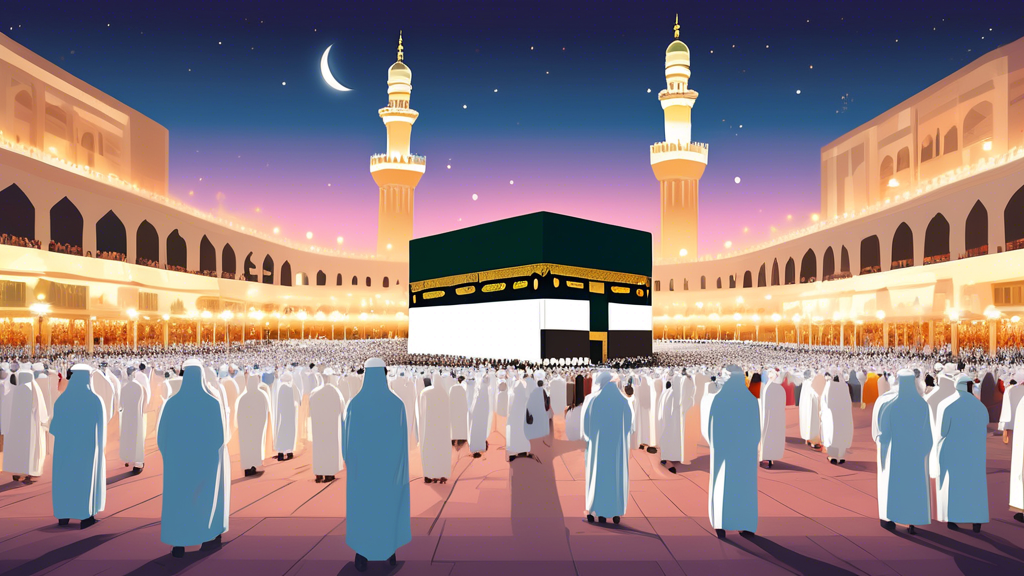Umrah is an Islamic pilgrimage to Mecca, located in Saudi Arabia, that can be undertaken at any time of the year, in contrast to the Hajj, which has specific dates according to the Islamic lunar calendar. Umrah is often considered the lesser pilgrimage, when compared to Hajj, which is one of the Five Pillars of Islam. Despite its optional nature, Umrah holds immense spiritual significance for Muslims worldwide and carries a profound purpose and reward.
Significance of Umrah in Islamic Tradition
In Islamic tradition, both Hajj and Umrah require the pilgrim to perform a series of ritual acts symbolic of the lives of Ibrahim (Abraham) and his second wife Hajar. The acts of Umrah involve entering a state of holiness and purity known as Ihram, performing Tawaf (circling) around the Ka’bah, carrying out Sa’i between the hills of Safa and Marwah, and finally, the shaving or cutting of the hair.
Although Umrah is not compulsory like Hajj, it is highly recommended in Islam. The Prophet Muhammad (peace be upon him) performed Umrah twice in his lifetime and encouraged his followers by elucidating its virtues. Performing Umrah is considered an expiation for the sins committed between it and the next Umrah. It also represents a personal spiritual cleansing, an opportunity to reaffirm one’s faith and prayers for both oneself and others, and a chance to seek forgiveness from Allah.
Rituals and Acts Performed During Umrah
The core rituals of Umrah can be deeply moving. On entering Mecca, Muslims proclaim the Talbiyah, a declaration of intent and monotheistic creed. This moment marks the beginning of a period of spiritual reflection and worship, focusing on the Almighty with a pure intention.
Completing the Tawaf is key during Umrah; pilgrims walk seven times around the Ka’bah in a counter-clockwise direction, praying and reflecting with each circuit. After Tawaf, Muslims perform Sa’i, where they run or walk seven times between the hills of Safa and Marwah, commemorating Hajar’s search for water for her son Ismael. This part of the ritual embodies the struggle in life, reliance on God’s will and the importance of perseverance.
The final rite of Umrah is Halq or Taqsir, where males generally shave their heads, and females clip a portion of their hair as a symbol of rebirth and distilling oneself from worldly sins.
The Spiritual and Social Impacts of Umrah
Spiritually, Umrah is a revitalizing journey that renews a believer’s faith, cleanses them of their past sins, and prepares them anew to face the challenges of life with renewed vigor and guidance. It is also an opportunity to stand before Allah on sacred ground, a privilege that ingratiates a devout Muslim further into their faith.
Socially, Umrah serves as a leveling ground, where Muslims from all walks of life congregate in a state of Ihram, donning simple white garments that symbolize the equality of all before God. This acts as a powerful reminder of the Islamic virtue of brotherhood and often fosters a global sense of solidarity among the Muslim community.
Concluding Thoughts
In conclusion, the purpose of Umrah goes beyond just fulfilling religious rites; it is a profound spiritual journey that offers purification, spiritual renewal, and a profound connection with Allah. It allows Muslims to express their submission to God’s will through a series of divinely stipulated rituals, reaffirming the faith doctrines laid out by Prophet Muhammad. For many, it is a lifetime experience that holds immense personal and communal significance, bridging the temporal with the eternal.
